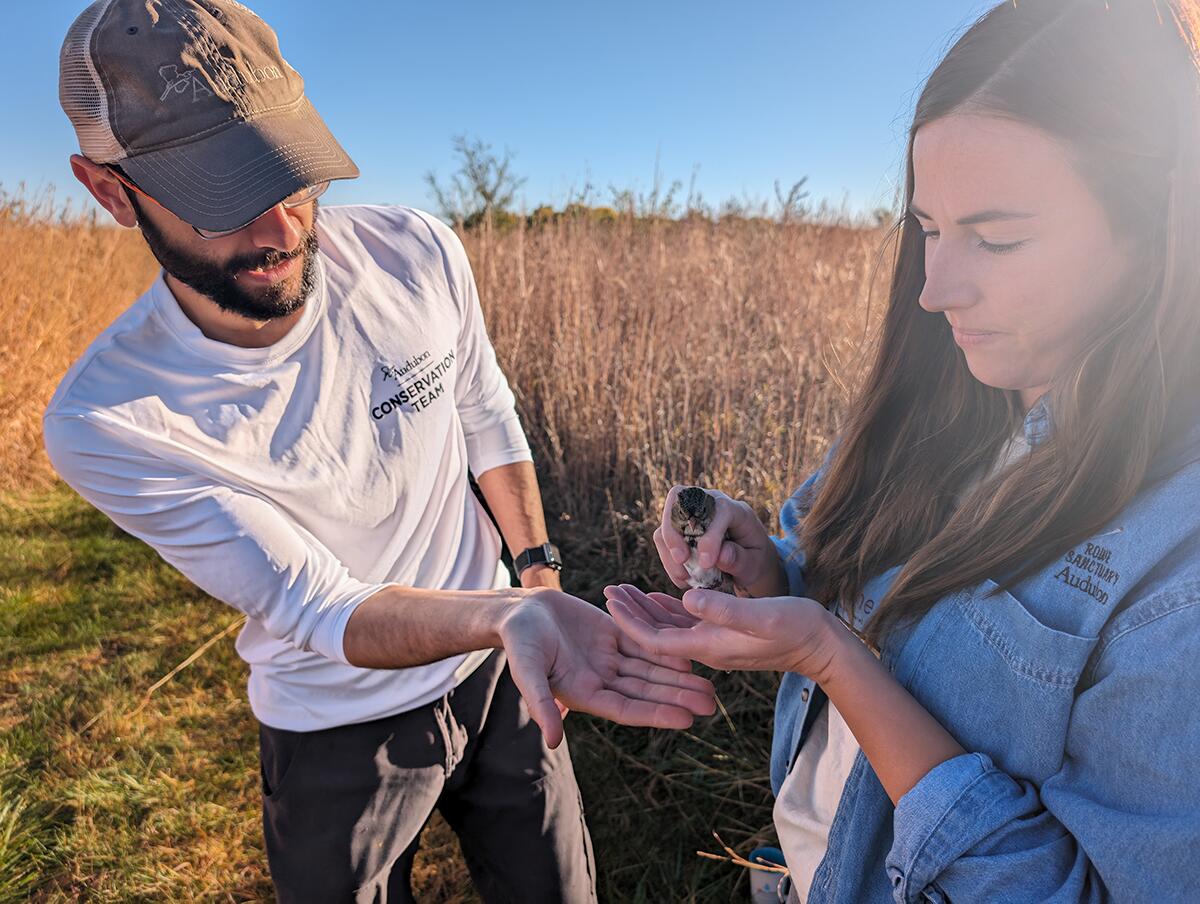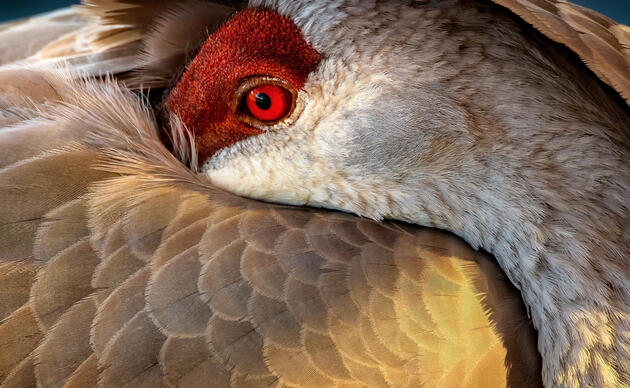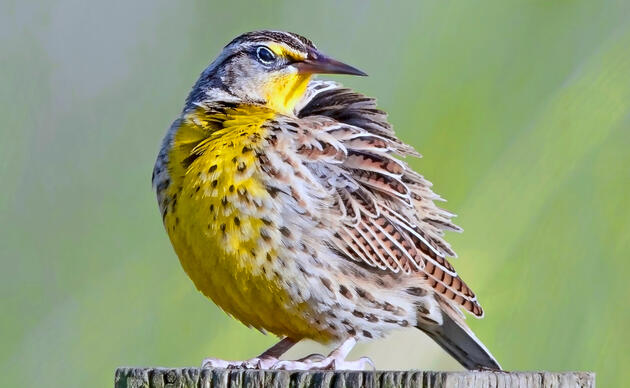Twice a year, hundreds of bird species migrate more than 3,000 miles from northern Canada to the Gulf of Mexico and central America. Research partnerships like the Migratory Bird Explorer allow us to collect tracking data covering all 3,000 of those miles.
Scientists like Stephen Brenner, Audubon Great Plains Avian Biologist, use multiple methods to track individual birds and map migratory patterns. The most accurate way to track animals is with a GPS tracking device, but these are often expensive and only work with a limited number of larger species. New innovations using some of the oldest tracking technology has opened up exciting new avenues for unprecedented research into amazing animal migrations.
Motus – Latin for ‘movement’ – is a radio telemetry tracking system that collects data on individual animals whenever a tracking device comes within range of a receiver. Information is collected and managed in a centralized database so that device tags can be detected wherever the animal travels. This requires that researchers coordinate and share their data, ideal for developing accurate maps of migrations and travel over time.
This network is especially valuable for many migratory species that are too small to carry GPS devices, like sparrows, thrushes, and warblers.
There are more than 1,500 Motus receiver stations globally. Almost 38,000 animals representing 317 species, mostly birds, have been tracked using Motus, according to the American Bird Conservatory.
Audubon’s Migratory Bird Explorer maps all kinds of animal tracking data from Prince Charles Island in Canada to the southern border of Chile and Argentina. We can track animals like Whooping Cranes from their journey from Alison Bay, Alberta Canada, through Rowe Sanctuary, to Audubon’s Coastal Islands Sanctuary in Texas. We can also track smaller species from the Motus network with equally impressive migrations, like the Veery, traveling from southern British Columbia through Rowe Sanctuary to complete its journey in southern Panama.
This is why having a hemispheric network matters: migratory birds need safe places throughout their thousand-mile journeys.








